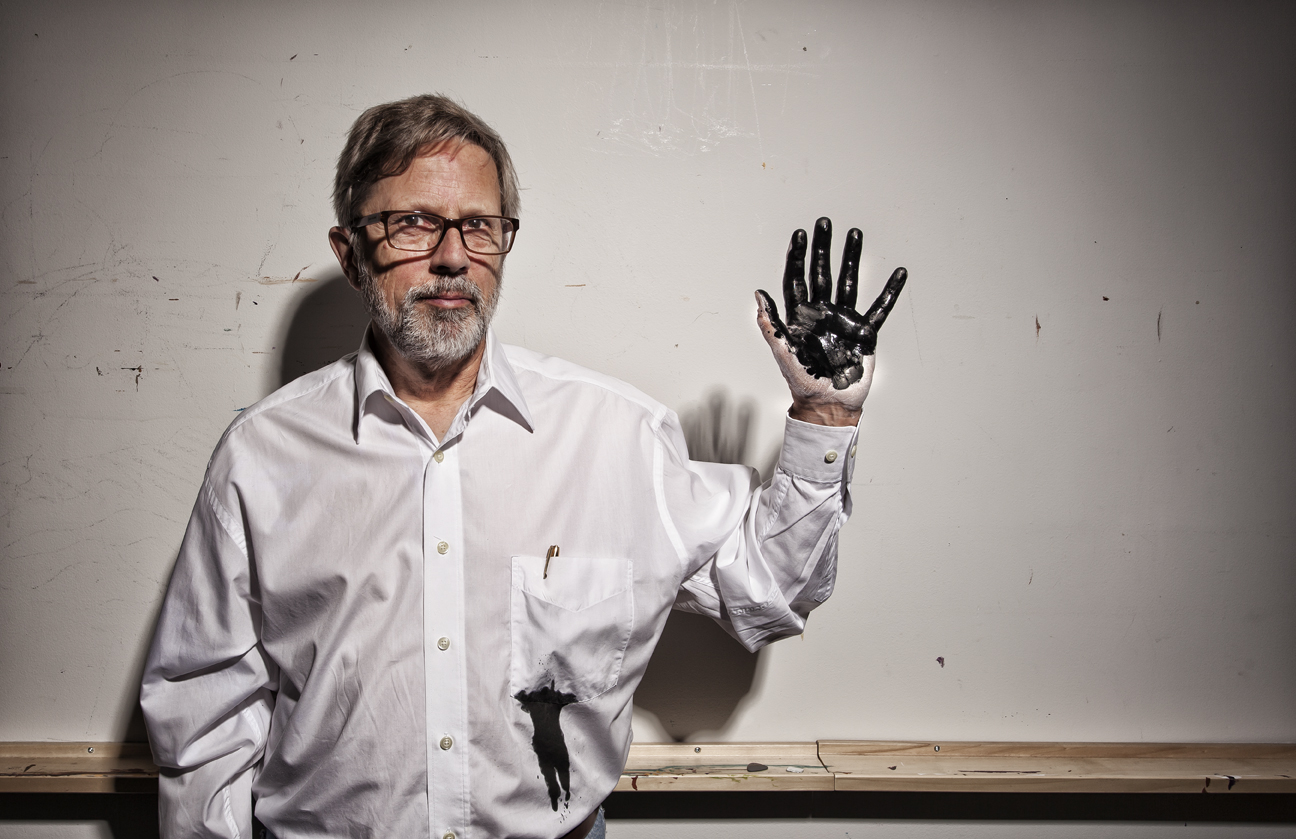Who: Ted Bishop
Age: 63
Job: Professor
Experience: He started researching ink five years ago after asking a librarian for a book about it and learning such a resource did not exist. His research project, titled The Social Life of Ink, has taken him around the world. He’s traced the origins of the ballpoint pen in Hungary and Argentina, studied traditional ink sticks in China and seen an ancient Qur’an in Uzbekistan. Now, he’s back in Edmonton, instructing in the department of English and Film Studies at the University of Alberta and working on a book that tells the life story of ink. He starts every day by writing for 20 minutes with a fountain pen.
- “The oldest ink in the world is gallnut ink and it was used for the Dead Sea Scrolls. Gallnuts are wasps’ nests in oak trees. If you crush the gallnuts and combine them with potassium sulphate and ‘gum arabic,’ which is dried sap, it makes ink that lasts 500 years.
- “Gallnut ink was the standard ink, used by Shakespeare and by Bach, and also required on official government documents in the U.S. until the early 1950s. The downside is that it doesn’t sit on top of paper like printer ink; it bonds with fibres. So if you don’t get the proportions right, the ink becomes mild sulphuric acid and burns holes in the paper.
- “In China’s Ming Dynasty, which is around the Renaissance period, ink was solid. Fresh ink was made every morning by putting a bit of water on an ink stone and grinding an ink stick clockwise for at least 100 strokes. It was a meditative act that prepared you to write.
- “It took over 10 years for László Bíró to develop the ballpoint pen. It was the 1930s in Budapest and, at first, he was working with a sort of plunger thing, like what’s used to put icing on cakes. He had an ink paste and eventually he figured out he could use a capillary action to let the ink come down and have a ball floating in a bracket. It had to be amazingly precise and if the ink was the wrong viscosity, it would all sludge up.
- “I visited László Bíró’s daughter, who is in her 80s, in Buenos Aires [her father, a Jew, escaped Europe for Argentina during the Second World War] . She pointed out that the 1940s ballpoint pen looks the same as pens today, whereas if you think of a 1940s radio or car, it’s completely different now. The one difference is a 1940s pen doesn’t smell very good. They were developing new plastics with uric acid, so it smelled like a urinal.
- “Milton Reynolds introduced ballpoint pens to the American market. His pens were shaped like rockets, but they were terrible and didn’t work. Still, Reynolds promoted the pens and flew around the world, making stops for gas along the way and handing out pens. He stopped in Edmonton and the whole city went out to see him. At the time, the ballpoint pen was as phenomenal as today’s iPhone. People lined up around the block to buy these things.
- “Marcel Bich was a Frenchman [born in Italy] who saw the interest Reynolds had generated and developed the Bic Cristal, a disposable ballpoint pen. The new pen outraged France [where Bíró patented it] . It took an act of parliament in the 1960s to allow such pens into elementary schools.
- “Ink fascinates me because it’s so common that it’s invisible. As an English professor and writer, I’ve spent my whole life immersed in ink, but I never actually think about it. Today there’s something a little bit secret about ink and writing by hand – a kind of intimacy. We connect with things differently when we actually write them down instead of typing.”
